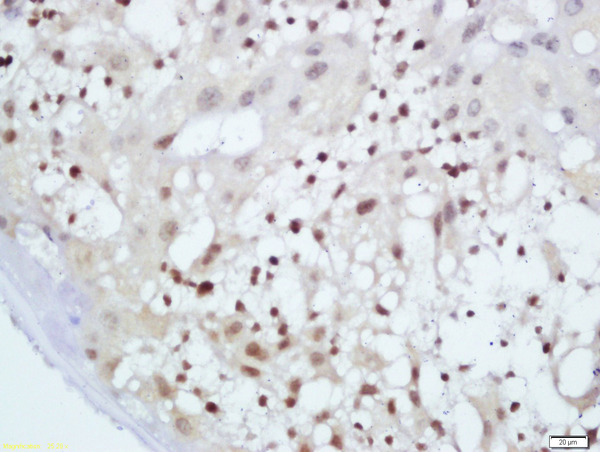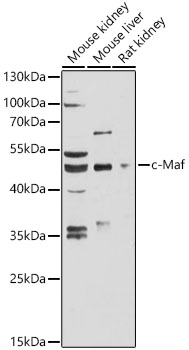
Formalin-fixed and paraffin embedded mouse placenta labeled with Anti-GnRHR Polyclonal Antibody, Unconjugated (bs-1464R) at 1:200 followed by conjugation to the secondary antibody and DAB staining
c-Maf Polyclonal Antibody
BS-5977R
ApplicationsImmunoFluorescence, ELISA, ImmunoCytoChemistry, ImmunoHistoChemistry, ImmunoHistoChemistry Frozen, ImmunoHistoChemistry Paraffin
Product group Antibodies
ReactivityHuman, Mouse, Rat
TargetMAF
Overview
- SupplierBioss
- Product Namec-Maf Polyclonal Antibody
- Delivery Days Customer16
- ApplicationsImmunoFluorescence, ELISA, ImmunoCytoChemistry, ImmunoHistoChemistry, ImmunoHistoChemistry Frozen, ImmunoHistoChemistry Paraffin
- Applications SupplierELISA(1:500-1000), IHC-P(1:200-400), IHC-F(1:100-500), IF(IHC-P)(1:50-200), IF(IHC-F)(1:50-200), IF(ICC)(1:50-200)
- CertificationResearch Use Only
- ClonalityPolyclonal
- Concentration1 ug/ul
- ConjugateUnconjugated
- Gene ID4094
- Target nameMAF
- Target descriptionMAF bZIP transcription factor
- Target synonymsAYGRP, CCA4, CTRCT21, c-MAF, transcription factor Maf, Avian musculoaponeurotic fibrosarcoma (MAF) protooncogene, T lymphocyte c-maf long form, c-maf proto-oncogene, proto-oncogene c-Maf, v-maf avian musculoaponeurotic fibrosarcoma oncogene homolog
- HostRabbit
- IsotypeIgG
- ReactivityHuman, Mouse, Rat
- Storage Instruction-20°C
- UNSPSC12352203
References
- Yu Q, Zhu S, Zhou R, et al. Effects of sinomenine on the expression of microRNA-155 in 2,4,6-trinitrobenzenesulfonic acid-induced colitis in mice. PLoS One. 2013,8(9):e73757. doi: 10.1371/journal.pone.0073757Read this paper





